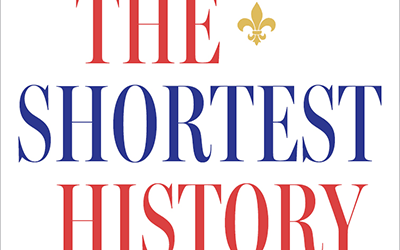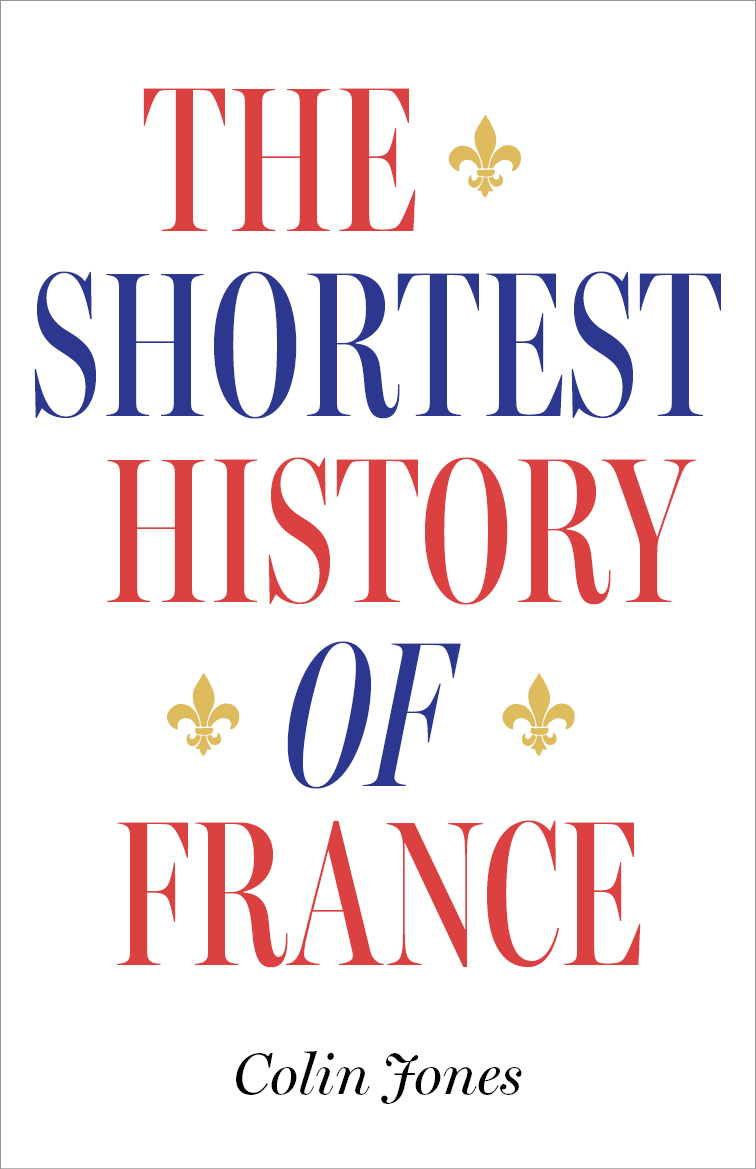
- Free Article: No
- Contents Category: France
- Review Article: Yes
- Article Title: ‘Paris is the world’
- Article Subtitle: France as an ethnic and cultural melting pot
- Online Only: No
- Custom Highlight Text:
There is a popular image of the ‘Hexagon’ (the roughly six-sided shape of France) as a powerful, stable national entity with a confident, even overbearing, cultural identity. Colin Jones instead stresses France’s dynamic history as an ethnic and cultural melting pot and its shifting borders as a crucible of military conflict. The central thread of Jones’s engaging story is the tension between contested meanings of ‘Frenchness’ on the one hand, and France’s constant interactions with the wider world on the other.
- Featured Image (400px * 250px):

- Alt Tag (Featured Image): Peter McPhee reviews ‘The Shortest History of France’ by Colin Jones
- Book 1 Title: The Shortest History of France
- Book 1 Biblio: Black Inc., $27.99 pb, 263 pp
- Book 1 Cover Small (400 x 600):

- Book 1 Cover (800 x 1200):

- Book 1 Readings Link: https://www.readings.com.au/product/9781760644482/shortest-history-of-france--colin-jones--2025--9781760644482#rac:jokjjzr6ly9m
The only king crowned in Notre Dame rather than the Reims cathedral was the English boy-king Henry VI in 1431, when England ruled northern France during the Hundred Years War. Only later in the fifteenth century did the territorial map of France start to resemble its current borders, and in 1942-44 France ceased to exist at all within the German empire. Brilliant French people have often had foreign family ties. The most admired Frenchwoman, Marie Curie, was born Maria Skłodowska in Poland; six of the ten francophone Nobel prize-winners for literature since 1945 have had personal roots outside France itself.
The point is, as Jones puts it trenchantly, that ‘at a time when nativist, xenophobic and white supremacist messages are being openly deployed by populist politicians – in France as in other countries – this is an important message for a national history of the Hexagon to convey’. The French have never been alone in their own land.
Colin Jones is Emeritus Professor of History at Queen Mary University of London. He is the author of outstanding books on French history, including The Cambridge Illustrated History of France (1994), The Great Nation: France from Louis XV to Napoleon (2002), The Smile Revolution in Eighteenth Century Paris (2014), and The Fall of Robespierre: 24 hours in revolutionary Paris (2021). Despite its modest title, this book is another substantial contribution to his oeuvre for its breadth, vitality, and erudition.
Given Jones’s particular expertise, it is not surprising that his narrative is strongest on France when it was dominant in Europe as la grande nation, from the reign of Louis XIV (1643-1715) to that of Napoleon (1799-1815), with the pivot point the Revolution of 1789, ‘one of the defining moments of the modern age’. These chapters are wonderfully clear expressions of the latest scholarship, including on the riches and violence generated by slavery in the Caribbean before its abolition in 1794.
The later chapters are not so successful, however. The history of France over the past 150 years reads like a long decline into colonial excesses, military failure, political corruption, and xenophobic extremism. The extraordinary economic growth and social change of the ‘thirty glorious years’ (les trente glorieuses) of 1944-74 are skated over. The narrative develops a certain breathlessness: monarchism is ‘a dead duck’, Macron will both ‘go for broke’ and ‘kick the can down the road’, the Olympics are ‘razzle-dazzle’.
In contrast to Jeremy Black’s A Short History of France (2021), however, this Shortest History (in fact slightly longer than Black’s) is rich in scope, expertly summarising political and military history in order to say far more than does Black about colonies and race, immigration and social tensions, and popular culture.
Jones is well known for his eye for illuminating detail and his enjoyment of the quirks of human folly. Despite the scale of his task, he demonstrates these qualities in hundreds of incisive observations. The book is studded with illustrations, maps, and sidebars, almost to the point of making it difficult to read: practically every page invites the reader to leave the text and go down an interesting byway. He interrupts an outline of conflicts between western, middle, and eastern ‘Francia’ in the ninth century to tell us about the eastern province of Lorraine today. It is a book that meets our era’s need for social media threads and entertaining newsclips, but within a scholarly and readable package.
There are fascinating details. The French name for the Jerusalem artichoke (topinambour) springs from fifty indigenous Tupinambá people from Brazil shipped to Rouen in 1550 for a royal pageant (even though the tuber was originally from Canada). Jones details the role since 1635 of the Académie Française in dictating correct French language over regional dialects and foreign corruption: so people eat fromage and asperges rather than formage and asparges. We learn, too, of the early practice of contraception (especially through coitus interruptus), most likely because the adoption of the principle of equal inheritance between children during the French Revolution created a disincentive to having large families.
Jones has an impressively deep knowledge of the history of France and its contemporary society and culture. Historians of the south, however, might puzzle at the absence of the Via Domitia from Narbonne into Spain on a map of major Roman roads and would note that the Pyrenean regions of the Basque country and Roussillon only became French in 1659, not 1486. The practice of using appellations to protect regional produce such as champagne commenced with the Chaptal Law of 1824 rather than in the 1930s.
The poet Marivaux famously declared in 1734 that ‘Paris is the world. The rest of the earth is nothing but its suburbs.’ While Jones reverses that quip and gives us a history of Paris in the world rather than at its centre, rural France is almost entirely absent from this book. In the mid-nineteenth century, about four-fifths of the population drew their livelihood directly from agriculture and pastoralism; today that figure is just 1.5 per cent. The greatest sea-change in the social history of France – the transition from a largely agrarian and peasant world to an urban and industrial society – goes unremarked. That tidal shift has underpinned transformations in the environment and landscape that similarly are unexamined here.
Nevertheless, this book is a stimulating and expert achievement. A decade ago, on 11 January 2015, Paris and the wider world were rocked by murderous attacks on the offices of the bitingly satirical magazine Charlie Hebdo, followed later in the year by the killing of 130 people at the Bataclan theatre and elsewhere. Jones’s book ends with the tenth anniversary of the Charlie Hebdo attacks just a few months ago. His final insights are both up to date and pertinent about the ‘boundless fascination’ of this ‘rich tapestry of people, of ideas’ still confronting ‘the ghosts of a troubled past’.


Comments powered by CComment